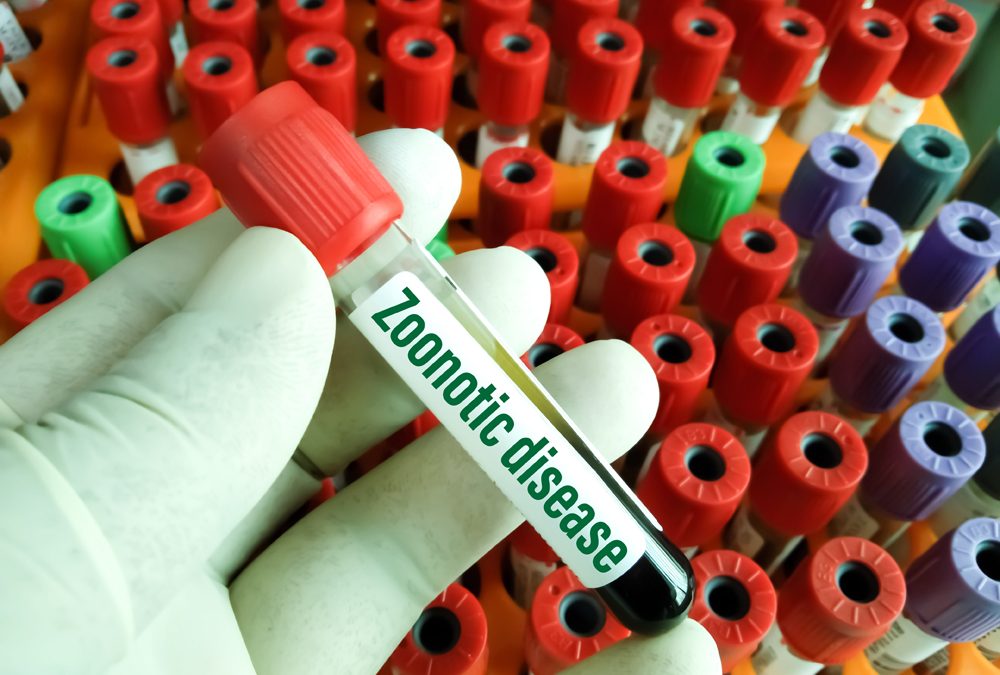Zoonotic diseases, those capable of being transmitted between animals and humans, remain one of the most pressing concerns in both veterinary and human medicine. As globalization, climate change, and increased human-animal interactions reshape the landscape of health, the emergence of new zoonotic diseases has become more frequent and more complex. These diseases not only affect companion animals and livestock but also pose serious risks to public health and the global economy. Emerging zoonotic disease news reflects a growing body of research, technological innovation, and public health strategy aimed at addressing this evolving threat. The role of veterinarians, researchers, and policymakers has never been more critical in safeguarding both animal and human populations.
The Nature of Emerging Zoonotic Threats
Emerging zoonotic diseases are often unpredictable, arising from a confluence of environmental, ecological, and social factors. Wildlife is frequently a reservoir for novel pathogens, with species such as bats, rodents, and birds serving as carriers. When human and animal habitats intersect, the chances of spillover events increase dramatically. Diseases that once seemed isolated in remote regions can now spread across continents within days due to global travel and trade. Companion animals are also susceptible to zoonotic infections, making them important players in this complex web of transmission. The dynamic nature of these threats underscores the importance of vigilance, research, and global cooperation.
Climate Change and Its Impact on Zoonotic Diseases
One of the most significant drivers of emerging zoonotic diseases is climate change. Rising global temperatures, shifting rainfall patterns, and extreme weather events alter the habitats of disease vectors such as mosquitoes, ticks, and fleas. This expands their range into new geographic areas, introducing pathogens to populations with little prior exposure. For example, tick-borne illnesses are being reported in regions once considered too cold for ticks to survive. Similarly, mosquito-borne viruses are emerging in temperate zones where they had not previously been a threat. These shifts place companion animals, livestock, and humans at greater risk, demanding new strategies for vector control and disease surveillance.
Companion Animals and Zoonotic Risks
Dogs and cats, as the most common companion animals, play a central role in zoonotic disease dynamics. Rabies remains the most well-known zoonotic disease associated with dogs, though vaccination programs have dramatically reduced its prevalence in many regions. However, other zoonotic diseases such as leptospirosis, ringworm, and certain parasitic infections continue to be of concern. Cats can serve as carriers for toxoplasmosis and Bartonella, both of which pose risks to human health. Emerging pathogens further complicate this landscape, with research revealing new bacterial, viral, and fungal infections transmissible from pets to people. Veterinary professionals are increasingly tasked with educating owners about these risks while emphasizing preventative care such as vaccination, parasite control, and safe handling practices.
Advances in Surveillance and Early Detection
The battle against emerging zoonotic diseases depends heavily on surveillance and early detection. Advances in technology have transformed how veterinarians and public health officials monitor animal and human populations. Molecular diagnostics, such as polymerase chain reaction testing, allow for rapid identification of pathogens with unprecedented accuracy. Next-generation sequencing provides insights into the genetic makeup of emerging viruses and bacteria, enabling scientists to track mutations and predict potential spillover events. Digital platforms are also being used to collect and share data in real time, linking veterinary practices, laboratories, and government agencies. These innovations allow for quicker responses, reducing the likelihood of widespread outbreaks. The integration of companion animal health data into larger surveillance systems ensures that pets are not overlooked in the fight against emerging diseases.
The Role of One Health in Zoonotic Disease Management
The One Health approach, which emphasizes the interconnectedness of human, animal, and environmental health, has become central to managing zoonotic diseases. Veterinarians, physicians, and environmental scientists are collaborating more closely than ever before to identify risks, share data, and implement preventative measures. This multidisciplinary strategy recognizes that diseases cannot be effectively managed in isolation. For example, controlling vector-borne diseases requires not only medical interventions but also environmental management and wildlife monitoring. Public health campaigns informed by One Health principles highlight the importance of vaccination, hygiene, and responsible pet ownership. The integration of veterinary expertise into public health frameworks represents a major advancement in preventing and managing emerging zoonotic threats.
Emerging Viral Zoonoses
Viral diseases are among the most concerning emerging zoonoses due to their potential for rapid spread and severe outcomes. Influenza viruses, for example, are notorious for their ability to cross species barriers, with avian and swine strains posing ongoing risks to humans and animals alike. Coronaviruses, already prominent in global consciousness, continue to be monitored closely in both wildlife and domestic animals. Rabies remains a persistent threat in many parts of the world despite advances in vaccination. Emerging viral pathogens highlight the need for continuous surveillance, robust vaccination programs, and public education. Veterinary research is increasingly focused on developing vaccines and antivirals capable of responding quickly to new viral threats.
Emerging Bacterial Zoonoses
Bacterial zoonotic diseases continue to present challenges for veterinarians and physicians. Antibiotic resistance compounds the threat, making some infections more difficult to treat. Salmonella, Escherichia coli, and Campylobacter are commonly associated with foodborne zoonotic illness, linking animal agriculture directly to human health outcomes. Leptospirosis, spread through contaminated water and urine, has reemerged in urban environments where flooding is common. Bartonella, transmitted by fleas and scratches from cats, is gaining attention as a more widespread zoonosis than once believed. Advances in bacterial genomics are improving understanding of how these pathogens evolve and spread, offering new opportunities for prevention and treatment. The growing recognition of bacterial zoonoses underscores the need for hygiene, food safety, and veterinary oversight.
Emerging Parasitic and Fungal Zoonoses
Parasitic and fungal zoonotic diseases, though sometimes overshadowed by viral and bacterial threats, are increasingly important in emerging disease news. Protozoan parasites such as Giardia and Toxoplasma gondii remain widespread, with transmission often linked to contaminated food, water, or contact with infected animals. Vector-borne parasites such as heartworm in dogs also have implications for zoonotic risk, as their vectors expand into new regions due to climate change. Fungal diseases, including ringworm and emerging species of Candida and Cryptococcus, pose significant threats, particularly to immunocompromised individuals. Advances in antifungal treatments and parasite control strategies are helping to manage these risks, but the evolving nature of these pathogens requires ongoing vigilance.
The Role of Vaccination and Preventative Care
Vaccination remains one of the most effective tools in preventing zoonotic disease transmission. Companion animals benefit from robust vaccination protocols that protect against rabies, leptospirosis, and other significant threats. Research continues into the development of vaccines for emerging pathogens, with some experimental vaccines targeting zoonotic influenza and coronaviruses. Preventative care extends beyond vaccines, encompassing parasite control, hygiene practices, and nutrition. Veterinarians play a central role in guiding owners through these measures, ensuring that pets remain healthy and that the risk of transmission to humans is minimized. The emphasis on preventative care reflects a broader shift in veterinary medicine toward proactive health management rather than reactive treatment.
Public Awareness and Education
Public awareness is critical in controlling zoonotic diseases. Misunderstanding or lack of knowledge about transmission pathways often contributes to the spread of infections. Education campaigns emphasize the importance of hand hygiene, safe food handling, and responsible pet care. Veterinarians serve as trusted sources of information, helping owners understand the potential risks associated with their pets and the steps needed to mitigate them. Schools, community organizations, and public health agencies also play a role in disseminating information about zoonotic threats. Advances in digital communication platforms have made it easier to reach broad audiences quickly, ensuring that accurate information is available during outbreaks and beyond.
Global Collaboration and Policy Development
Zoonotic diseases are global challenges that require global solutions. International organizations are promoting collaboration across borders to improve surveillance, share research, and coordinate response efforts. Policies mandating animal vaccination, food safety standards, and import-export controls are essential in reducing the spread of zoonotic pathogens. Funding for research into emerging diseases has also increased, reflecting recognition of the threat they pose to global health and economies. Veterinary professionals are increasingly involved in policy discussions, ensuring that animal health considerations are integrated into broader public health strategies. The global response to zoonotic disease reflects an understanding that no single nation can manage these threats in isolation.
The Future of Emerging Zoonotic Disease Management
The future of zoonotic disease management will be shaped by innovation, collaboration, and vigilance. Advances in biotechnology may soon yield universal vaccines capable of protecting against multiple viral families. Artificial intelligence and machine learning are expected to enhance surveillance by analyzing vast datasets to predict outbreaks before they occur. Genetic editing tools such as CRISPR may play a role in reducing pathogen virulence or altering vector populations. At the same time, ethical considerations and the potential for unintended consequences require careful oversight. As society grapples with these challenges, one constant remains: the need for veterinarians, physicians, and environmental scientists to work together in the spirit of One Health. By addressing zoonotic diseases at the intersection of animal, human, and environmental health, the world will be better prepared to face the threats of tomorrow.

